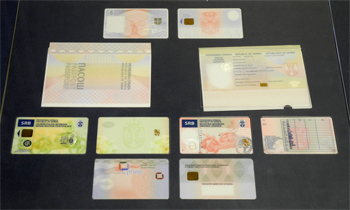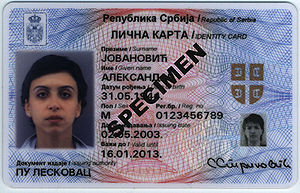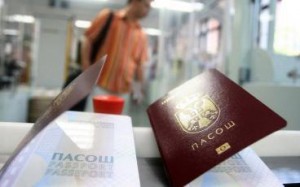Serbia’s Prime Minister & Minister of the Interior, Ivica Dacić, has been the Prime Minister of the country since July 2012. He is the leader of the Socialist Party of Serbia, and from 2008 to July 2012 he served as First Deputy Prime Minister, as well as Minister of Internal Affairs. He was member of the Serbian and President of the caucuses in the parliaments of the Republic of Serbia and the Federal Republic of Yugoslavia. In 1992 Ivica Dacić was elected member of the Citizens’ Council at the parliament of the Federal Republic of Yugoslavia. He was Minister of Information at the so-called transitional Serbian government from October 2000 to January 2001 and in 2004 he was elected member of the Serbian parliament. Prime Minister Dacić has worked tirelessly and without compromise to fight corruption and crime as the Interior Minister, has helped pass the traffic law, along with working to get Serbia’s new biometric passports completed. He has also played a leading role in efforts to deliver an agreement between Belgrade and Pristina and subsequently to secure EU agreement on the opening of formal negotiations on EU accession.
How and why the Serbian Government’s vision, firmly centered around eIDs, is a pivotal element of change in public ICT infrastructures and modernization of government-to-citizen interaction paradigms in the country
 In the global sector of government-issued ID documents, a massive digitalization wave brought ashore a new era of opportunities and challenges, defining a new and borderless scenario. It has created an environment where citizen centric services are designed to leverage modern ICT infrastructures and express their potential in the real and digital worlds alike.
In the global sector of government-issued ID documents, a massive digitalization wave brought ashore a new era of opportunities and challenges, defining a new and borderless scenario. It has created an environment where citizen centric services are designed to leverage modern ICT infrastructures and express their potential in the real and digital worlds alike.
But what is the speed at which this ongoing digitalization wave has been able to transform the landscape and trigger change in the different countries? Where did it actually advance to the point of bringing tangible fruits?
Initially promoted by air transport authorities, the vision of increased efficiency, security and transparency deriving from the introduction of eIDs, was suddenly embraced with unprecedented impetus in the aftermath of the dramatic 9.11 call to action by governments in the different continents. ePassport programs were initiated almost synchronously throughout VISA waiver countries to respond to the US Visit mandate.
The vision emerging around machine readable travel documents (MRTDs) soon became the electronic Identity (eID) vision, commonplace in public debate about e-government, giving ground to the collective efforts of those advocating for the establishment of new paradigms in identity management and adequate standards in ID security. Nonetheless, the speed of eID adoption in fact still varies dramatically case by case, without any direct correlation to aspects such as the state of development of the individual country, or the particular position of the country’s society with respect to the digital divide.
What happens today is that we see eIDs flourish in some of the nations boasting to be the driving economies in their region, such as Germany. We see them deployed in large numbers in underdeveloped countries preparing for elections, especially in young democracies, and in major countries interested in enforcing transparency in social relief programs, such as India.
But eIDs have also been interpreted by many as a political issue, with opposition to the programs leveraging privacy concerns and creating situations, such as the nightmarish ping-pong of policy makers in the UK, that resulted in greater wastage in dismantling the National ID project than the investments initially made.
Today, we see the French government eventually succeed to introduce a chip in their drivers’ license, a project stalling on its starting blocks since quite some time. Brazil has created the legislative framework for eIDs to be deployed harmonically in the different states, but a couple of years have passed and the business case has not been solved on the financing side. Despite all efforts made to date to engage experts on the policy makers side, as well as security, ICT systems and ID technology experts, it is only where leadership of eID projects is granted at the highest level that the programs can actually take off in order to reach the desired heights.
 Serbia, an independent parliamentary republic since 2006 with a population slightly below 7.2 million, has a chip on its National ID cards, on passports, on drivers’ licenses, on vehicle registration cards and on a pilot population of healthcare cards. And the list of government issued documents being digitalized is soon to become longer. Serbia embraces technology-led progress at the highest level. The country is classed as an upper-middle income, transitional economy, mostly dominated by agriculture, manufacturing and services. It is still facing the challenge of growing employment rates as rapidly as its GDP (in average increasing at a 4.45% per annum over the last decade) and of surpassing the challenges brought about by the financial crisis.
Serbia, an independent parliamentary republic since 2006 with a population slightly below 7.2 million, has a chip on its National ID cards, on passports, on drivers’ licenses, on vehicle registration cards and on a pilot population of healthcare cards. And the list of government issued documents being digitalized is soon to become longer. Serbia embraces technology-led progress at the highest level. The country is classed as an upper-middle income, transitional economy, mostly dominated by agriculture, manufacturing and services. It is still facing the challenge of growing employment rates as rapidly as its GDP (in average increasing at a 4.45% per annum over the last decade) and of surpassing the challenges brought about by the financial crisis.
ID People met with Serbia’s Prime Minister Ivica Dacić to find out how his government is focusing efforts on how to turn present challenges into future opportunities.
Why is the modernization of Serbia’s ICT infrastructures and ID programs in particular an essential element for the streamlining of operations within the country’s economy?
 Efficiency of government-to-citizen relations is paramount in our vision for a competitive economy. De-bureaucratization is the means to have all counterparts focus on what truly matters, generates value and can lead to significant contributions. We simply do not want our citizens to lose days or waste energies in dealing with the government, but consider it our own responsibility and objective to establish and maintain an ongoing dialogue that costs him or her only minutes or hours in more complex cases. Of course, we need to gather and exchange data, in order to constantly update records that are important to the State, to the community and to the citizen alike. But this is the context in which eIDs come about, as the key that makes it viable to access and leverage interfaces that are user-friendly, secure and fast.
Efficiency of government-to-citizen relations is paramount in our vision for a competitive economy. De-bureaucratization is the means to have all counterparts focus on what truly matters, generates value and can lead to significant contributions. We simply do not want our citizens to lose days or waste energies in dealing with the government, but consider it our own responsibility and objective to establish and maintain an ongoing dialogue that costs him or her only minutes or hours in more complex cases. Of course, we need to gather and exchange data, in order to constantly update records that are important to the State, to the community and to the citizen alike. But this is the context in which eIDs come about, as the key that makes it viable to access and leverage interfaces that are user-friendly, secure and fast.
Do you see efficiency as the key aspect that eIDs and eGovernment bring about as the prime advantage over alternative forms of authentication and G2C communications?
 When looking at ID documents, it is commonplace to think of security as the prime objective of the overall system. Indeed, there is no comparison between the levels of security that can be reached with modern eIDs in comparison with their paper-based predecessors. But we look at eIDs as a business case – and in fact a successful one – where significant economies in terms of time and resources can be reached introducing the chip as digital heart of the document, as a key to lock-in essential information, to access data and to update records and histories.
When looking at ID documents, it is commonplace to think of security as the prime objective of the overall system. Indeed, there is no comparison between the levels of security that can be reached with modern eIDs in comparison with their paper-based predecessors. But we look at eIDs as a business case – and in fact a successful one – where significant economies in terms of time and resources can be reached introducing the chip as digital heart of the document, as a key to lock-in essential information, to access data and to update records and histories.
The business case is that of our economy, with advantages both for the government and for each individual citizen, resident or traveller transiting on Serbian territory. Beyond this, eIDs bring about transparency to the apparatus.
According to government sources, the Serbian administration gained control on corruption issues that saw losses both for the government and insurance companies in the order of 30 million euro per annum in the single case of vehicle registrations. How did the introduction of today’s vehicle registration smart card address this?
This introduction eliminated queues at policing stations for the completion of bureaucratic formalities and triggered the efficient exchange of critical data stored in different locations, such as the servers of the Ministry of Interior, of the insurance company, of the national register of companies (in the case of corporate vehicles), of the tax authorities and even of Interpol.
 In fact, Serbia was the first country in Europe completing the enrollment of all privately held vehicles in an eID program between 2010 and 2011. And, within the last five years, since we have been making new documents in Serbia not a single forged ID, driving license, passport etc. have been found or registered by national or international institutions like the police, Interpol and so on, which shows the high level of protection. This covers the total number of IDs circa 4.7 million out of which 3.3 million have a chip, passports of almost the same numbers – 3.3 million with EAC standard since 2009 and since 2011, more than 1.4 million drivers’ licenses and more than 3.3 million traffic licenses.
In fact, Serbia was the first country in Europe completing the enrollment of all privately held vehicles in an eID program between 2010 and 2011. And, within the last five years, since we have been making new documents in Serbia not a single forged ID, driving license, passport etc. have been found or registered by national or international institutions like the police, Interpol and so on, which shows the high level of protection. This covers the total number of IDs circa 4.7 million out of which 3.3 million have a chip, passports of almost the same numbers – 3.3 million with EAC standard since 2009 and since 2011, more than 1.4 million drivers’ licenses and more than 3.3 million traffic licenses.
What is the next step in terms of the introduction of smart documents for other future applications?
Next year’s plans see three to four further Serbian documents destined to embed chips, starting with the official card designated for policemen, featuring a double interface – for logical access control and for mobile authentication. The government furthermore intends containing the proliferation of individual firearms licenses issued to the holders of weapons, by creating a new smart card that can store information of about up to 10 items registered by the same holder. This new document should support the registration of about 1.5 million weapons next year with a total card population estimated not to exceed the 300,000 units. Each weapon holder would in fact be enrolled with a single card, or in some less frequent cases, with two, only when the size of his collection of weapons is such to justify the issuing of more than only a single card.
Another document that will become an eID under current plans, is the residence card for foreign citizens living in Serbian territory. While the technology for this project is now ready, the milestone remaining to be reached is the completion of the legislative effort underpinning the program. Last, but not least, the ID document released to the 30,000 government sector employees will also become an eID card in 2014.
 All this is intended to happen alongside a general revamping of today’s Serbian National ID card, which will become a dual interface card. One of the two chips embedded on the next generation eID produced for Serbian citizens and residents will be used to store secure credentials, such as those required to operate NFC systems in due time. The document will include the optional feature of a digital signature, which will further speed-up and simplify secure communication protocols for exchanging data and checking the identity of the individual holder.
All this is intended to happen alongside a general revamping of today’s Serbian National ID card, which will become a dual interface card. One of the two chips embedded on the next generation eID produced for Serbian citizens and residents will be used to store secure credentials, such as those required to operate NFC systems in due time. The document will include the optional feature of a digital signature, which will further speed-up and simplify secure communication protocols for exchanging data and checking the identity of the individual holder.
How do all these advancements to modernize systems and infrastructures in so many sectors impact on the Serbian Government’s drive for European Union accession?
We need to find a new politics for a new era, to make us part of the family of Europe once again. Serbia has made a number of important steps and it is now about to make the most important one and launch EU accession talks. This will be a milestone in the process and it will make the process irrevocable. This will be a clear message that Serbia is determined to carry out the reform process with a view to ensuring that the living standards for Serbian citizens are the same as those in the EU.
